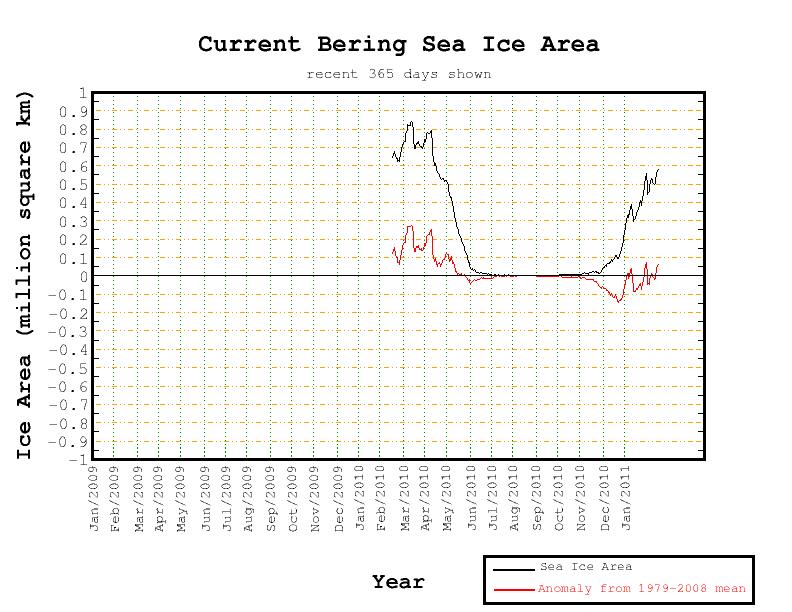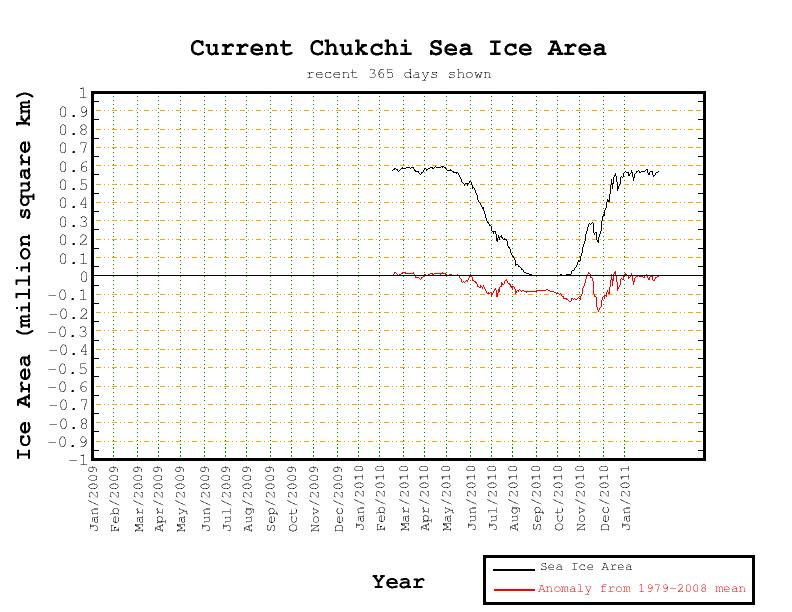USFWS: Pacific Walrus Threatened by Global Warming
Walruses give birth and raise their young on Arctic pack ice. As the ice drifts, it carries the walruses to fresh feeding grounds. It also helps isolate the young walruses from dangerous predators such as polar bears. Although walruses can raise young on solid ground, access to food and protection from predation is sharply reduced in such circumstances and will result in lower survival for both young and adults.
Walruses live in the Bering and Chukchi Seas located between the west coast of Alaska and the east coast of Russia’s Chukotka region. The big animals congregate in just three listed breeding areas in the Bering Sea, all offshore in areas historically covered by pack ice in the winter months. Despite the cold temperatures experienced in much of the U.S. during of January 2011, the U.S. National Snow and Ice Data Center reports that the month saw the lowest amount of arctic sea ice cover since measurements began in 1979.
When mentioning the lack of “arctic sea ice cover“, the author apparently means Quebec. The seas around Alaska have normal ice pack.
http://arctic.atmos.uiuc.edu/cryosphere/IMAGES/recent365.anom.region.2.html
http://arctic.atmos.uiuc.edu/cryosphere/IMAGES/recent365.anom.region.10.html




the comments on Yahoo are funny…….
And telling……. a couple of years ago there wouldn’t have been anything but alarmist drivel in the comments…………….we’re winning.
Hopefully when the funding stops, these stories will slow/stop except for the diehards Grrrrrrrrr
Back in September, USFWS had a different story see: http://tinyurl.com/4ounj8c
I think the comment posted on the article you cited was most interesting.
Commentary“According to our result, the rapid warming during 1970-1990 contains a large fraction of unpredictable natural variability due to the AO. The subsequent period of 1990-2010 indicates a clear trend of the AO to be negative. The global warming has been stopped by natural variability superimposed on the gentle anthropogenic global warming. The important point is that the IPCC models have been tuned perfectly to fit the rapid warming during 1970-1990 by means of the ice-albedo feedback (anthropogenic forcing) which is not actually observed. IPCC models are justified with this wrong scientific basis and are applied to project the future global warming for 100 years in the future. Hence, we warn that the IPCC models overestimate the warming trend due to the mislead Arctic Oscillation.”
I’m doing my part to save the walruses from those big bad polar bears-think I’ll drive my Hummer across the street to visit a friend, leave it running so it stays nice “n” toasty when I drive back across.
Which are stupider, the walruses or the warm-earthers?
Will the walruses swim toward the decreasing ice or away from it?
When the ice advances, will they move with the advance or too far into the tropics, where there is no ice?
Have they been smart enough to do this remarkable feat, going where the ice happens to be, for millennia?
I’m sure the walruses are smarter, and they swim around.
Are you smarter than a warm-earther?
“It (the ice) also helps isolate the young walruses from dangerous predators such as polar bears. “
Yet we are told that polar bears can only find seals to eat when there IS ice.
exactly……
If the whole Arctic was covered in ice, there would be no way for them to breathe
“When mentioning the lack of “arctic sea ice cover“, the author apparently means Quebec. The seas around Alaska have normal ice pack.”
Yes, OK, but the walruses know about that heat wave as well as the predictions for AK and it all makes them so worried they just can’t survive. It is a little appreciated effect of The Warming.
As Paul H just noted, the walruses are so stressed that they don’t even know when to worry about polar bears. And without the protection of ice, narwhals will probably start stabbing them from beneath just for entertainment.
Ouch!
That would smart.
http://www.bbc.co.uk/programmes/p004860t
“Walruses gather annually in big groups on the beaches of Wrangel Island. They thrive here because food like clams and shellfish are abundant on the mud bottom of the shallow Chukchi Sea. It’s a good place for females to bring the pups that were born earlier in the year.”
There you go again Steve, putting facts overtop of a good BS story! 🙂